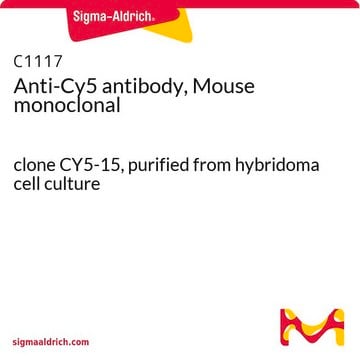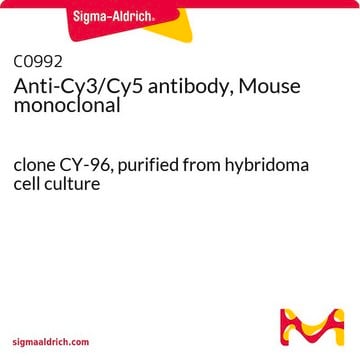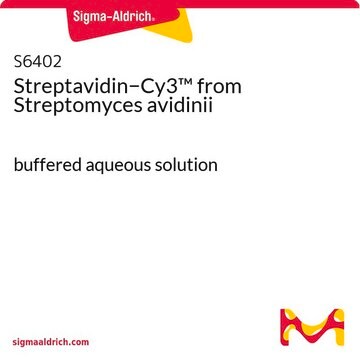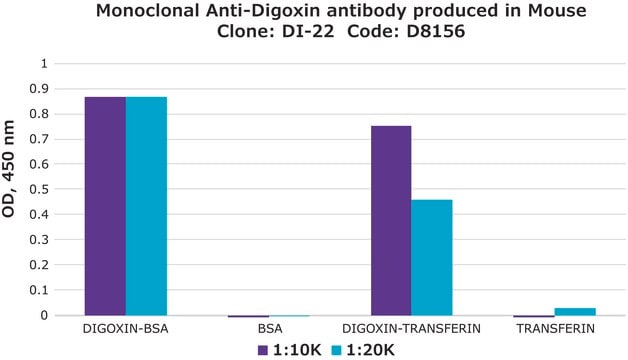C3117
Monoclonal Anti-Cy3/Cy5−Biotin antibody produced in mouse
~1 mg/mL, clone CY-96, purified immunoglobulin, buffered aqueous solution
Synonym(s):
Monoclonal Anti-Cy3/Cy5
About This Item
Recommended Products
biological source
mouse
conjugate
biotin conjugate
antibody form
purified immunoglobulin
antibody product type
primary antibodies
clone
CY-96, monoclonal
form
buffered aqueous solution
concentration
~1 mg/mL
technique(s)
direct ELISA: suitable
dot blot: suitable
immunocytochemistry: 1-2 μg/mL using chicken fibroblasts
microarray: suitable
isotype
IgG2a
shipped in
dry ice
storage temp.
−20°C
target post-translational modification
unmodified
Looking for similar products? Visit Product Comparison Guide
Related Categories
General description
Specificity
Immunogen
Application
- enzyme linked immunosorbent assay (ELISA)
- immunocytochemistry
- dot blot assay
- protein microarrays
- immunofluorescenc
Biochem/physiol Actions
Physical form
Disclaimer
Not finding the right product?
Try our Product Selector Tool.
Storage Class Code
10 - Combustible liquids
WGK
WGK 3
Flash Point(F)
Not applicable
Flash Point(C)
Not applicable
Personal Protective Equipment
Certificates of Analysis (COA)
Search for Certificates of Analysis (COA) by entering the products Lot/Batch Number. Lot and Batch Numbers can be found on a product’s label following the words ‘Lot’ or ‘Batch’.
Already Own This Product?
Find documentation for the products that you have recently purchased in the Document Library.
Our team of scientists has experience in all areas of research including Life Science, Material Science, Chemical Synthesis, Chromatography, Analytical and many others.
Contact Technical Service







